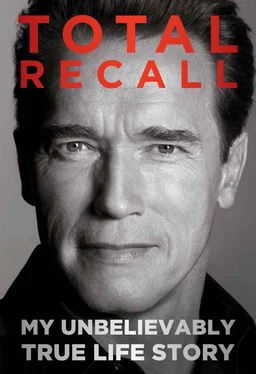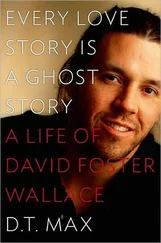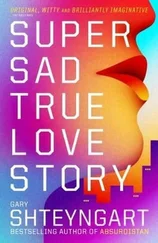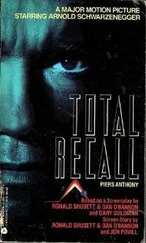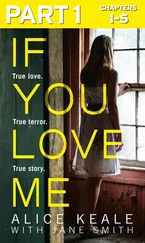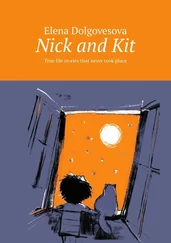Another positive sign was that more women were turning up at Gold’s—not to ogle the guys but to ask about joining. At first, they weren’t allowed. From a practical standpoint, it would have been hard for Joe Gold to let them in, because there was only one set of toilets and showers. But the real truth was that the guys were not yet ready for it. Bodybuilding was too much of a man’s world. The last thing you wanted was to worry about what you said in the gym. There was a lot of cursing and a lot of man talk. I told Joe that he should include women. I’d seen the benefits in Munich: having women in the gym made us train harder, even if you had to watch your language a little.
Sometimes the women who asked to join were sisters of bodybuilders or girlfriends. Sometimes they were girls who were already working out at the beach. If a woman needed to train for a physical test—to join the police or the fire department, say—Joe would always give special permission. He would tell her, “Come in at seven in the morning when there are fewer guys here, and you can work out. Be my guest; you don’t have to pay anything.”
Joe never made a decision without the bodybuilders’ consent. Should there be a radio playing? Should he carpet the floor? Or would that ruin the dungeon effect? This was a hard-core gym that catered to the hard-core guys. We had endless discussions about letting women join. Finally we agreed to open the membership, but only to the hard-core women who signed a statement that said in effect: “We understand there’s crude language, we understand there are weights dropping on feet and there are injuries, we understand there is only one set of bathrooms, and we will use the bathrooms on the beach.” I wanted bodybuilding to open up completely to women, including women’s championships. At least this was a start, and you could see the interest was there.
We felt bodybuilding contests were never big enough—it was always the same five hundred or one thousand spectators—and it felt very disorganized. Sometimes there was no music or the emcee was bad or the lighting was shitty. No one came to meet us at the airport. Everything was wrong. There were exceptions, like the Mr. World event in Columbus and the Mr. Universe event in London, but most competitions were amateurish. We made a list of everything we wanted to see fixed and started calling people for advice.
Franco and I scheduled our show for August 17. The hall we rented was a grand, old 2,300-seat theater in downtown LA called the Embassy Auditorium. The next thing we did was hire a publicist, Shelley Selover, who had an office right in Venice. When Franco and I went to see her, I doubt that she’d ever given bodybuilding a thought. But after asking a lot of questions and listening for a while, she agreed to take us on. “I can do something with this,” she said. That was an important vote of confidence.
Shelley hooked us up right away with a veteran Sports Illustrated writer named Dick Johnston, who flew over from his home in Hawaii to check out our sport. Shelley coached us carefully before we met. “He wants to make the case to his editors that bodybuilders are athletes, serious athletes, and do a big story,” she said. “You think you can help him with that?” So I went into the interview with all kinds of examples about how if this athlete hadn’t picked bodybuilding, he’d have been a baseball star, and that guy would have been a boxer. They would be athletes anyway, but it happened that bodybuilding was their passion and was where they thought they had the most potential. Dick Johnston liked the idea and arranged to come back to cover our event.
Franco and I really hustled to put together the show. We knew we could never make ends meet with ticket sales alone. We had to pay the airfares for the bodybuilders coming in from around the world, we had to pay the judges, we had to pay for the hall and for advertising and promotion. So we looked for sponsors. Isaac Hayes suggested that we talk to his friend the great boxer Sugar Ray Robinson, who had a foundation. “He’ll be into this,” he told me. “His foundation is really for the underdog, you know? He gives money to inner city kids and minorities. So you just have to explain that as an Austrian in California and a bodybuilder, you’re a minority!” Franco and I thought that was pretty funny, that we should be minorities. Franco was thrilled at the idea of meeting one of the greatest fighters of all time. I was excited too—I remembered seeing Robinson in newsreels as a kid. By 1974, he’d been retired for almost ten years.
When we arrived at his foundation, there were many people in the waiting room. I thought about everybody who must be hitting him up, and how great he was, as an ex-champ, to be spending his time on his foundation.
Finally, it was our turn. Sugar Ray brought us into his office and was incredibly warm. We were in such awe that we didn’t even hear what he said the first few seconds. He took his time and listened to our pitch asking for money to purchase trophies for our event. By the end, he was laughing. It was just so weird, two foreigners trying to run an international championship in bodybuilding in LA. He gave us $2,800 for the trophies—which was a lot in those days. We went out and bought really nice ones with little plaques that said, “Donated by the Sugar Ray Robinson Youth Foundation.”
We discovered that people really weren’t negative about bodybuilding. They were open to it, but nobody was talking to them. This was open-minded America, ready to learn something new. Our approach was to educate the people. I had the personality. I knew Gaines’s stories had gotten a good reception. You know how real estate people say “Location, location, location”? Our motto was “Presentation, presentation, presentation.”
As Mr. International drew near, we put up posters headlined THE GREATEST MUSCLE SHOW EVER in YMCAs and gathering places all over town. The poster featured pictures of me (five times Mr. Universe, four times Mr. Olympia), Franco (Mr. Universe, Mr. World), Frank Zane (Mr. America, Mr. Universe), Lou Ferrigno (Mr. America, Mr. Universe), Serge Nubret (Europe’s greatest bodybuilding star), and Ken Waller (Mr. America, Mr. World).
To my amazement, Shelley not only lined up newspaper interviews but also succeeded at getting me invited onto nationwide talk shows, including The Merv Griffin Show , The Tonight Show , and The Mike Douglas Show . That was when we realized we were right: there was actually an interest here; it wasn’t like we were just imagining it.
Of course, given bodybuilders’ stereotypical image, nobody was going to put me on the air without a preinterview well in advance. I had to go to the studio in the afternoon, hours before the show, so they could check out whether this muscleman could open his mouth and make sense. So I’d chat with the preinterviewer, who after awhile would say, “This is great! Now, can you say all this stuff when you’re under pressure and in front of an audience?”
I would tell him, “Well you know, the interesting thing is, I don’t see the audience. I’m so into it that I don’t see them. So don’t worry; I can block it out.”
“Great, great.”
The first show I did was Merv Griffin . The comedian Shecky Greene was the guest host that day. I sat down, and we exchanged a few lines, and then Shecky went quiet for a beat just looking at me. Then he burst out, “I can’t believe it! You can talk!” That got a big laugh.
When somebody sets the bar that low, you cannot go wrong. Shecky kept complimenting me. He was very funny, and he made me funny as a result. This wasn’t just a boost for me, it was a boost for bodybuilding in America: the viewers were getting to see a bodybuilder who looked normal when he was dressed, who could talk, who had an interesting background and a story to tell. All of sudden the sport had a face and a personality, which made people think, “I didn’t realize these guys are funny! This isn’t weird, it’s great!” I was happy too, because I got to promote Mr. International.
Читать дальше
